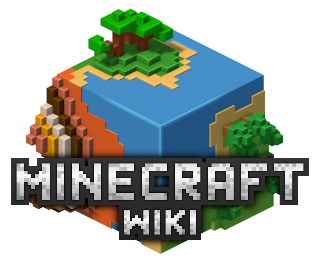| Deze pagina heeft vertaling nodig Deze pagina bevat te veel woorden uit een andere taal.
Reden: Engelse versie van 12-02-2012 |

'Vloeistoffen' zijn blokken dat kan, zoals de naam al doet vermoeden, flow en te verspreiden. Er zijn momenteel slechts twee vloeistoffen in Minecraft Lava en Water.
Hoe vloeistoffen werken
Fluids are cellular automata. The rules appear to be as follows:

Lava sijpelt door een laag van vuil.
Falling fluid
An air block below a fluid block is converted into a fluid block of that type. This happens faster for water than for lava.
As of Beta 1.9 pre-release, fluid that is suspended above an open area by one block thick of material will seep through the material and drip to the floor. Lava particles that are seeping do not cause damage or start fires. This makes digging upwards safer, since you can tell if you are near a pool of water/lava.
Fluid level
Each fluid block has a level value. Source blocks have a level of 0, and the maximum level depends on fluid type.
- Water: 7
- Lava: 3 <7 in The Nether.>
Note: The "level" value increases as the water is further from the source. A high level value means that the water is actually physically downhill.
Still fluids
To keep track of which blocks are actively flowing, Water and Lava each have a pair of block IDs. For water, there is Water (8) and Still Water (9). Still Water never updates. Water updates periodically and will change itself to Still Water when it cannot spread any further. When fluids have air to the left and right of it, it will appear to be still, since it can't flow in two directions.
Changing a block next to Still Water will turn it back to Water so it can spread some more.
If you edit either type of fluid block into your inventory, they will spread when placed, since placing a block causes updates.
Fluid block update times
The state of a fluid block only updates at certain times:
- On creation
- If one of the 6 neighbouring blocks' state changes.
- If its own level changes
State changes that cause an update include:
- Adding or removing a block
- A neighbouring block's level changes
- A redstone wire switches on or off
Fluid block update process
When a fluid block updates, it performs the following checks.
- Check inward flow
- If there is a fluid block of the same type above, set level to 1
- Otherwise, reduce or increase level in steps of 1 so that it is 1 higher than the one of its 4 neighbouring block with the lowest level*
- If level is increased past the max level, replace fluid block with air block.
- Level cannot be decreased below 1
* This does not affect source blocks (level = 0)
- Check outward flow
- This only happens for fluid blocks of less than the max level value
- Determine the shortest distance to a fall, but only scan 5 blocks distance*
- If any of the directions tied for shortest have an air block, convert that air block to a fluid block with a level of 1 more than the current block)*
* This means that lava will flow towards a drop that it cannot reach.
Source creation
A water block is converted into a source block if all three of these conditions hold:
- it is bordered by 2 water sources
- the 2 sources are on the same horizontal level as it
- there is a solid, opaque block underneath it
In Beta 1.9 Pre-release 5, a lava block could be converted into a source block if the following conditions were met:
- it is bordered by 4 lava sources in a cross-like arrangement
- the 4 sources are on the same horizontal level as it
- there is a solid, opaque block underneath it
As of Release 1.0, lava source blocks cannot be created.
Mixing of fluids
Mixing of fluids cause cobblestone to be produced, except that if water flows into a lava source block, then obsidian is produced. As of Beta 1.9 pre-release, lava that falls onto water will produce stone. Prior to 1.9 pre-release, the water would be replaced with falling lava.
When determining the shortest distance to a drop, other fluid blocks are assumed to be equal to air.
| Natuurlijk |
| ||||||||||||||||
|---|---|---|---|---|---|---|---|---|---|---|---|---|---|---|---|---|---|
| Constructies |
| ||||||||||||||||
| Flora en fauna |
| ||||||||||||||||
| Gemaakt |
| ||||||||||||||||
| Mineraalblokken | |||||||||||||||||
| Gebruiksvoorwerpen |
| ||||||||||||||||
| Mechanismen | |||||||||||||||||
| Alleen creatief |
| ||||||||||||||||
| Alleen opdrachten |
| ||||||||||||||||
| Ongebruikt |
| ||||||||||||||||
| Verwijderd |
| ||||||||||||||||
| Ongeïmplementeerd |
| ||||||||||||||||
| Grap functies |
| ||||||||||||||||
